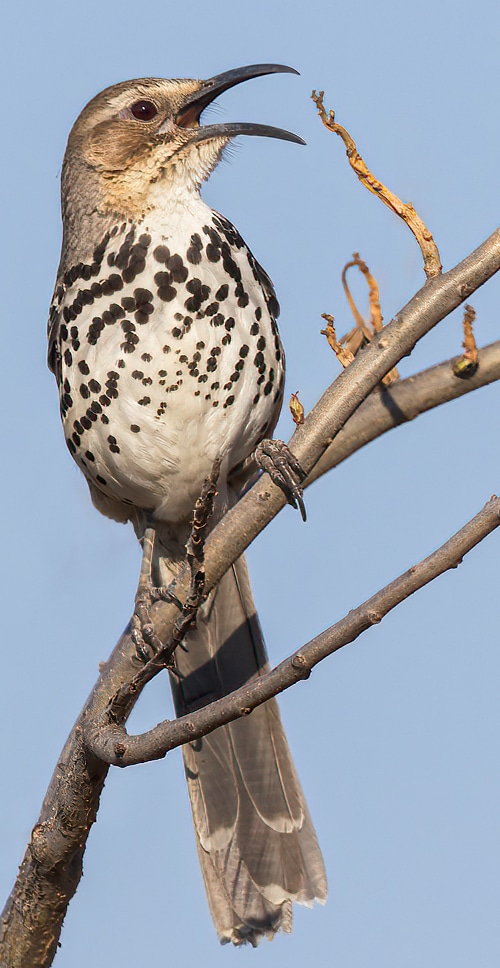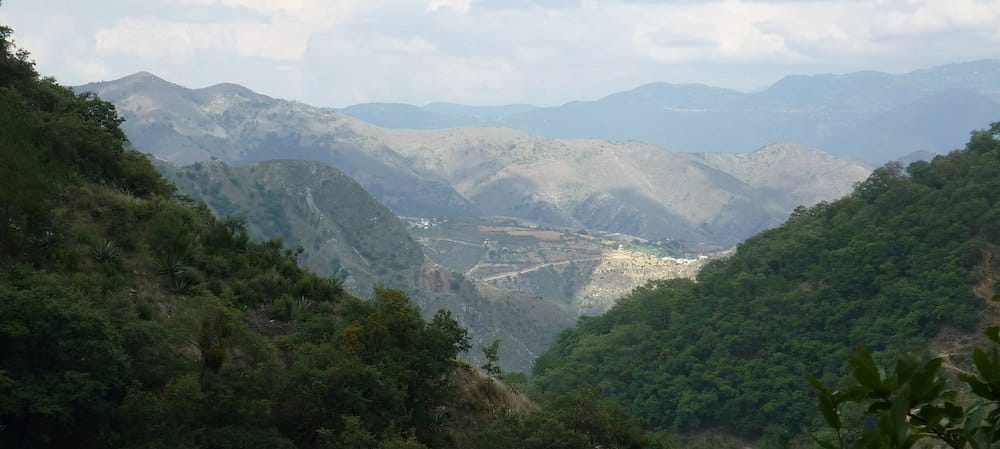Free and Sovereign State of Guanajuato

Guanajuato a state in the central highlands in the middle of Mexico and is one of the 32 states that make up the country. It is divided into 46 municipalities and its capital city is Guanajuato after which it is named, which comes from the local indigenous P’urhépecha language, meaning ‘Hill of Frogs’. Las Ranas (the Frogs) is a nickname for people from this state as frogs are their state animal. Other important cities in the state include León, the state’s biggest city with almost two million inhabitants, Salamanca, and Irapuato. The state of Guanajuato borders the states of San Luis Potosí to the north, Querétaro to the east, Michoacán to the south, and Jalisco to the west. It has an area of just over 30,000 square kilometers (c. 12,000 square miles). It has a state had a population of around 6.5 million people.
The territory is divided among three of Mexico’s physical regions, the Sierra Madre Oriental, the Mexican Plateau and the Trans-Mexican Volcanic Belt. The Sierra Madre Oriental in Guanajuato consists of the Sierra Gorda and the Sierra del Azafrán in the northeast. The Mexican Plateau extends through the centre of the state. It is subdivided into various regions parted by low-lying mountain chains such as the Sierra de la Cuatralba and the Sierra de Cubo. The Trans Mexican Volcanic Belt crosses the state in the south and includes the Bajío area, the Altos de Jalisco and the valleys area in the far south. The state is crossed by several mountain ranges with mountains between 2,300 and 3,000 meters high. The largest changes in elevation are seen in arid versus wetter zones, which can often be relatively nearby, with foliage changing from rainforest to pine forest to desert landscapes.
The Querétaro Biosphere Reserve, on the Guanajuato side, covers about 237,000 hectares. The Sierra Central is a series of low, gentle mountains in the centre of the state that are part of the Sierra Madre Occidental. The Sierra Central is a series of low, gentle mountains in the centre of the state that are part of the Sierra Madre Occidental. It has wild vegetation from tropical rainforest to arid grasslands with cactus, with cypress trees along rivers and other surface water. Wildlife includes quail and many migratory birds.

Sierra Gorda Querétaro – ©Diógenes89 CC BY-SA 4.0 via Wikimedia Commons
The state’s best-known geographical region is the Bajío, a relatively low and flat area of between 1,700 and 1,800 meters that surrounds the Lerma River and its tributaries and is centred on Guanajuato City. This farmland is considered some of Mexico’s most productive. The state has about 1,500 bodies of surface water, along with underground aquifers in most parts of the state. Its principal lake is Lake Cuitzeo, on the border with Michoacán and the Yuriria. Several of the Siete Luminarias craters have also developed crater lakes, especially La Joya, Parangueo and Olla de Zìntora.
The most important river in Guanjuato and one of the most important in the country is the Lerma, along with its tributaries Guanajuato River, La Laja, and Turbio. The Lerma river basin covers 81% of the state (center and south); the Pánuco River basin (north of the state) and Cuitzeo Lake cover the remainder. The Lerma is regulated by various dams in part to control the fact that it originally ran very high in the rainy season and very low in the dry season. The north is mostly semi-arid and the south ,ore humid. Hot and moist climates in the state have temperatures ranging from 18 to 22 °C and are associated with tropical rainforest, with some grassland.
Birding Guanajuato
The state contains 21 protected areas that extend over 63,611 hectares in 26 municipalities. These include Sierra de Lobos, Siete Luminarias, the Silva Dam, Megaparque de Dolores Hidalgo, Cuenca de la Esperanza, Las Fuentes, Peña Alta, Pinal de Zamorano, Parque Metropolitano, La Joya Crater, Lake Yuriria, Las Musas, Culiacán and La Gavia Mountains, Sierra de los Agustinos, Sierra de Pénjamo, Cerro de Cubilete, Cerro de Amoles, La Purisima Dam, Arandas Mountain, La Soledad Dam, and the upper basin of the Temascatío River.

Sierra de Lobos – ©JavierRA Public domain via Wikimedia Commons
The Querétaro Biosphere Reserve contains 182 bird species, 42 mammal species. The park contains a number of species in danger of extinction, including the black bear and the puma. The climate is semi-arid with variations in temperature due to altitude changes, but most of the area is covered in tropical forest in which many plants lose leaves during the dry season from November to May.
The Bajio is still one of the major grain producing regions in Mexico. Certain areas of the state have large orchards producing peaches, strawberries, cactus pear, avocado, grapes, apples, quince, walnuts, apricots and guava. Livestock raising is an important economic activity and can be found in all parts of the state, with animals such cattle, pigs, goats, sheep and domestic fowl.
Poor farming has impoverished the soil in some places and the forests were largely denuded of native species that were used in the mining industry that has left large areas more arid and less wildlife friendly. Nevertheless, the state has recorded over 400 bird species and there are good birding spots particularly in the protected areas.
-
Wikipedia
GNU Free Documentation License
http://en.wikipedia.org/wiki/Guanajuato
-
Number of bird species: 434
(As at June 2024)
-
Avibase
PDF ChecklistThis checklist includes all bird species found in Guanajuato , based on the best information available at this time. It is based on a wide variety of sources that I collated over many years. I am pleased to offer these checklists as a service to birdwatchers. If you find any error, please do not hesitate to report them. -
eBird
PDF Checklist423 species (+90 other taxa) - Year-round, All years
-
Fundacion Ecologica de Guanajuato
Facebook PageThe Fundacion Ecologica de Guanajuato A.C. is a non-governmental organization established in March 1988. It promotes and initiates projects, cooperative programs, and investigations, and provides information and education about the state`s biological resources. The Fundacion supports the concept of ecodevelopment and works to implement it. Our plan is to achieve sustainable developmentÑthe foundation of a new relationship between humankind and nature. We believe conserving biological diversity and achieving sustainable management of resources must involve local inhabitants, land owners, and both direct and indirect users of the ecosystems. Therefore, since the beginning we have worked alongside the ONG Desarrollo Rural de Guanajuato A.C. (Rural Development Agency); which provides social services to inhabitants of rural areas such as those encompassed by the Santa Rosa Forest of Guanajuato…
-
El Charco del Ingenio
WebsiteSatellite ViewSet in the heart of the central highlands of Mexico, this reserve covers more than 100 hectares adjacent the historic town and is the result of non-governmental efforts, begun in 1990, to rescue and protect an area of outstanding natural beauty, of ecological and historical importance…
-
Legacy Tours
Tour OperatorA relaxed pace, colonial Mexico’s splendor, and birding as recreation. [Tour Style A – Birding daily – with the monarch butterflies, colonial cities, and tourist activities filling each day of exploration and wonder] -
Travelian Birding Adventures
Tour OperatorTravelian Birding Adventures is the best way to discover Mexico's fascinating birds. Our tours are specialized, top-quality birding journeys throughout Mexico, designed to provide you with knowledge of our region through a comprehensive survey of the Mexican avifauna.
-
2019 [04 April] - Rodrigo Lopez
ReportMost of our group tallied 50 or 60+ lifers in Guanajuato and every birder loves to see new life birds. However, a special element of our experience was Rodrigo’s support of the local initiatives for sustainable birding and related environmental practices. It was a pleasure to meet and bird with our Mexican friends.
-
Quinta Las Acacias
AccommodationThe house itself is built against the base of a mountain, providing a dramatic backdrop that has influenced the hotel design to the extent that a number of the suites lead onto charming terraces. Here the visitor can relax in more traditionally Mexican surroundings, amongst colorful floral arrangements, or enjoy the open-air Jacuzzi and take in the spectacular view.
-
Birds of San Miguel de Allende and M
WebsiteMany of these birds can be seen on our bird walksheld the third Sunday of each month -
Guanajuato is the ideal birdwatching destination in central Mexico
ArticleThe state of Guanajuato has a great density of birds, considering the 2% of its territory in the Mexican Republic.
